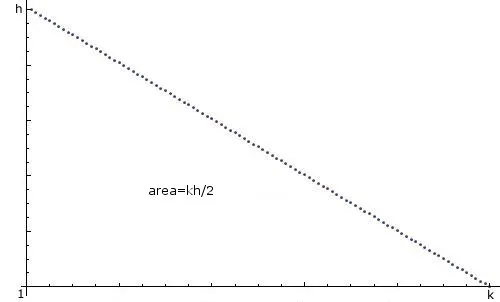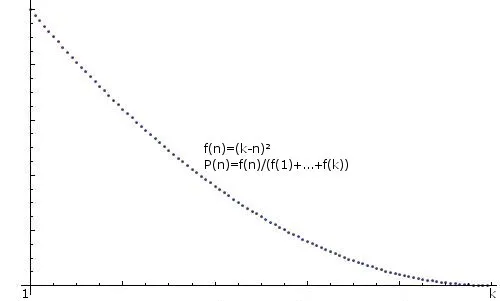我如何在Java中创建一个随机整数
n,介于1和k之间,并具有“线性下降分布”,即1最有可能出现,2不太可能,3更不可能,...,k最不可能出现,且概率呈线性下降,如下所示:

import java.util.*; 这段代码。Random r=new Random();
int n=r.nextInt(k)+1;
创建一个介于1和k之间的随机整数,均匀分布。
推广:有没有关于创建任意分布整数的提示,例如 f(n)=some function,P(n)=f(n)/(f(1)+...+f(k))。如果有,也请分享一下,例如:
 。
。